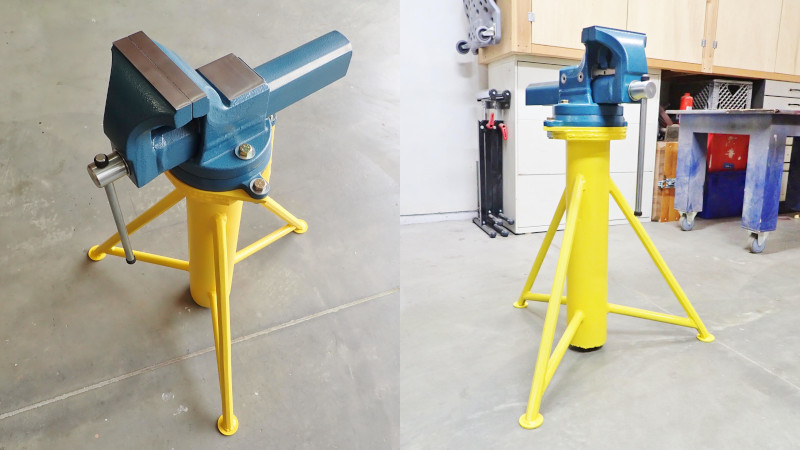Vises are useful things for holding whatever you’re working on, but too often they’re stuck to a bench. [seamster] has experienced the glory of having a more portable solution, however, and has shared his design for a heavy duty vise tripod that provides just that.
The trick is that to be useful, the design must be heavy and stout enough to hold the vise without tipping over. For this build, [seamster] selected a fat steel pipe with 1/4″ thick walls, some solid bars and some 3/8″ thick plate. Legs and arms where then fabbed up from the bar material and welded up to form the tripod. A stout plate for the vise was then welded on top of the pipe, and the vise mounted pride of place on top.
It’s not a particularly difficult build, but it’s a smart idea that gets you a vise you can easily drag to where it’s needed. If you don’t have the vise itself, consider this hydraulic build. Meanwhile, if you’ve been whipping up your own useful workshop hacks, let us know!















I’d still worry about pushing it over if the loads on it aren’t straight down. Perhaps mount it on a stout steel plate heavy enough to make it more stable, but not so heavy that it isn’t at least luggable.
I wonder if the height plays well with that monster legged table in the background. The main use I’d see this for is with long things that extend off a vise’s normal home. A Rigid vice for tapping pipe has wide legs.
It probably suits his needs well, but I put lots of non-vertical stresses on my vise.
Farriers and Hoofcare specialists have something similar with strong magnets to hold tools and a circular (large) base where you can stump your foot on to hold the “x-pod” on the ground. No more tilting. The first versions (about 20-25 years ago) where built like this tripod (with one long leg to the back, which went under the horse) but they didn’t “stand up to the task” … so the circular-based ones are the standard today. With a vise on top, I’d simply stand on the “foot” plate with both feet – and that’d do the trick.
He should but a couple of wheels on it to make it easier to transport, either that or look into how mortar bases are designed.
I recently printed some stands for some surround sound speakers that sit on end tables next to my couch. The first generation of the stands used 3 feet, but I decided that it would be too easy for my cat to knock them over. I considered 5 legs for the second generation, the way desk chairs have all been built in the last 20 years or so, but ultimately decided to just go with a round base. I think the round base is the most stable and the cat hasn’t knocked them over yet.
In this design, I think at the very least the vise should be rotated so the jaws are directly over a leg, rather than between two of them.